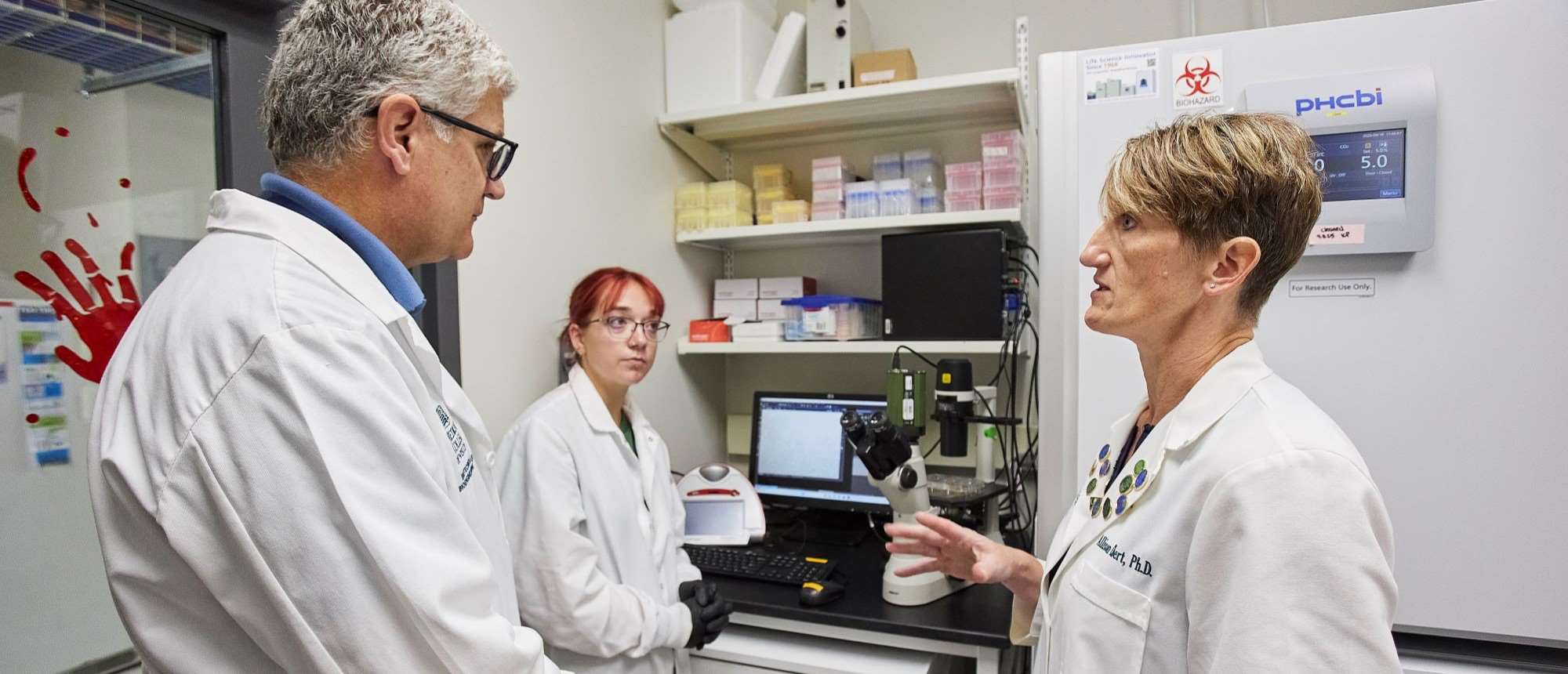MCW Researchers Aim to Save Lives Through the Development of Female Crash Test Dummies

Susan Cronn, DNP, RN, Hargarten Injury Prevention Fellow in the Comprehensive Injury Center and nurse practitioner in the Department of Surgery at the Medical College of Wisconsin (MCW), gets angry when she thinks about how decades of advances in car safety have overlooked the health of women.
“I see these patients every day, badly injured patients,” she says. “There are certainly people who die, but we also have people who suffered severe injuries that affect them for the rest of their lives, and some of these injuries are probably attributable to safety equipment not being designed for their body type.”
Cronn says crash test dummies used in most safety tests are made to represent the male body, with the most common model being 5’9” and 170 pounds. In order to test the impact of a crash on a female body, a scaled-down version of the male-representative dummy is used.
“They call her the five percenter,” Cronn says, explaining that the model is representative of the 5th percentile of the standard male size. “She is about 5 feet tall and 100 pounds.”
The use of dummies that fail to accurately represent a woman’s body makes it difficult to determine whether current vehicle safety standards, which help to guide the design of safety features, accurately reflect the experiences of women involved in crashes.
“Vehicle safety research is looking at how this safety equipment works for someone who’s on the smaller side of adult bodies, but not accounting for actual physiological differences between male and female bodies,” Cronn says.

The issue came to Cronn’s attention after numerous experiences with female patients who entered the trauma unit with more breast injuries from crashes, compared to men who were also involved in a crash.
“I saw a lot of breast hematomas and started to talk to trauma surgeons. I asked them what we know about seat belts over breasts and have we looked into this,” she says.
Cronn learned that the odds for a belt-restrained female driver to sustain severe injuries is 47 percent higher than a belt-wearing man involved in a similar type of crash. In addition, she says, the overall risk of nonfatal injuries is 28 percent higher for females than males, and fatality risk is about 18 percent higher for women, even when factoring in a similar age and crash scenario. This is improving with newer cars, but a discrepancy remains.
Cronn knew something had to be done. With the support of her mentor and co-primary investigator Frank Pintar, PhD, founding chair of the Marquette University and MCW Joint Department of Biomedical Engineering; John Humm, PhD, former assistant professor in the MCW Department of Surgery; and Dale Halloway, program manager for the Wisconsin CIREN Center at Zablocki VA Medical Center, Cronn applied for and received a grant to conduct research aimed at reducing disparities and achieving equity between males and females in vehicle safety.
The goal of the research project is to increase knowledge about how the female body is impacted by crash injuries and how it differs from male physiology. Learning more about those differences, Cronn says, should lead to the eventual development of physiologically representative female crash test dummies and more equity in crash testing.

“It’s the kind of research that has the potential to really make a meaningful impact on everyone’s day-to-day life,” Cronn says. “It doesn't just affect one community, one type of person; this is literally for everybody.”
Work on the project is already underway. The researchers were able to conduct preliminary field tests using a donated female cadaver to measure internal organ movement in a crash. Essentially, Cronn explains, they were measuring how much the organs became compressed by a seat belt as it would tighten in a crash.
Using that information, along with existing literature and data from the National Trauma Data Bank and the National Highway Traffic Safety Administration, the team of researchers is pinpointing strategies which will allow them to use the donated cadavers efficiently.
“We want to make sure we’re using our resources effectively to make a significant impact on science,” Cronn says.
In addition to the researchers, ancillary and consulting members of the group contributing on this study include physical therapist Lauren Croal, DPT; Amber Brandolino, a Public and Community Health PhD student at MCW; Richard Walsh, a fourth-year medical student at MCW; and Maria Kuhn, a student at Columbia University who is a crash survivor and advocate for equity in vehicle safety.
Eventually, Cronn says, their study has the potential to impact vehicle safety testing for all different types of bodies, including children, pregnant persons or those who are obese. As far as the timeline for their work, Cronn says the development of an accurate female representative crash test dummy could take 5-7 years. Just as important, she says, is that the industry is on board in using them and that this work results in policy interventions that increase the safety of everyone.
“It’s important to recognize this is a public health issue and a way to intervene on an issue that impacts a large part of the public,” she says. “Keeping female-bodied drivers safe is something that helps everyone.”



